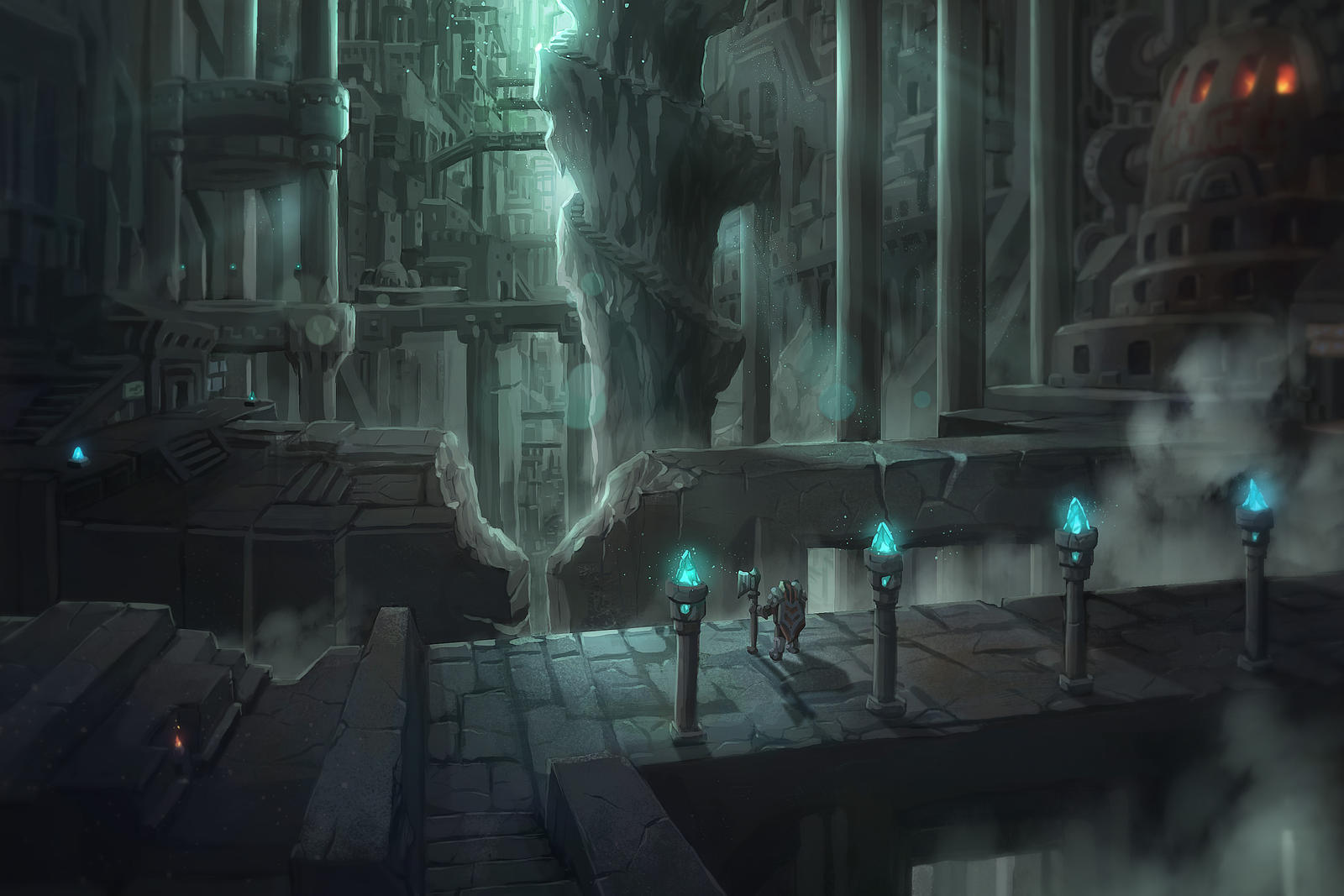Ruins of Khardin
No one alive has set foot in Khardin. No one alive has spoken to someone who died long ago that had set foot in Khardin. Its legend, however, grows with every passing tale told or song sung in the taverns and meadhalls of New Kharolin, the city which, if one believes the legends, has its layout patterned after the ancient Khadric home. Somewhere, perhaps, in the archives of the Underground Kingdom lie scrolls with precise drawings of the ancient city's layout or of the intricately carved city gates that looked out over what is now known as the Drowned Lake. These scrolls - so ancient that reading them may well spell their demise even if they could be found - likely say nothing of the true location of the city. For beyond everyone's agreement that it lay on the western shores of the lake, its entrance, buried by tons of mountains and the shattered bones of over 20,000 Orks and Soulmeliti. There have, on the odd occasion over the two thousand years that followed, been calls to excavate the tunnels beneath the Gulf of Kharl through which their ancestors fled but wiser voices have prevailed, allowing the Khadra's ancient homeland to fade from history into myth.
If the tales are to be believed, Khardin dwarfed New Kharolin in size. With dozens of levels descending into the deeps, following the veins of iron, gold, and silver that spurred the wealth of their ancestors. While a core city certainly existed with open caverns with finely wrought pillars supporting their massive ceilings, Khardin is said to have spiderwebbed beneath the Dreuthekon Mountains in a warren of winding tunnels, off-shoots, and private residences. Like the people that inhabited the city, it was blend of both public joviality and intensely private individuality. And, if the songs are to be believed, it is still full of wealth beyond imagination. The Kharda, in their harried flight, could not bring their treasures with them. And with each passing verse, the jewels and art, the gold and silver, left behind grows in splendor; a myth from which the Khardra have, wisely, moved beyond.
RUINED SETTLEMENT
1687 BC


